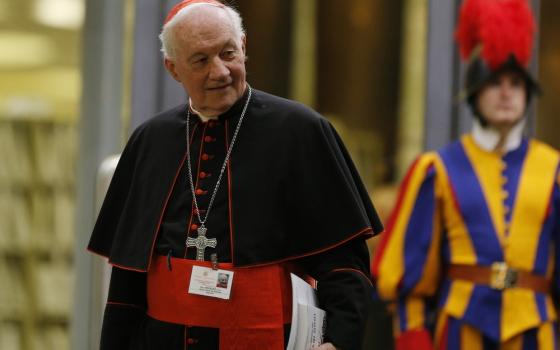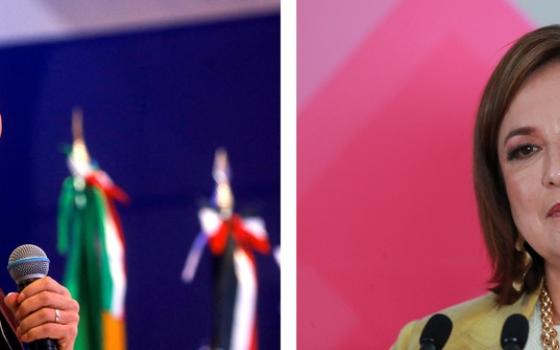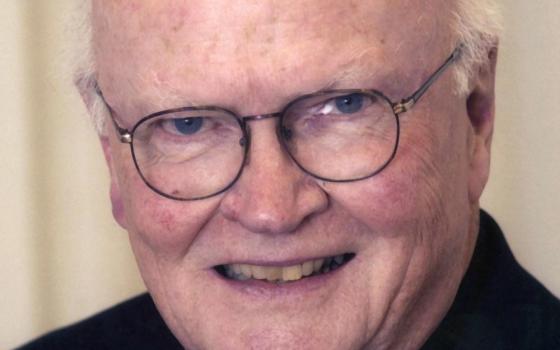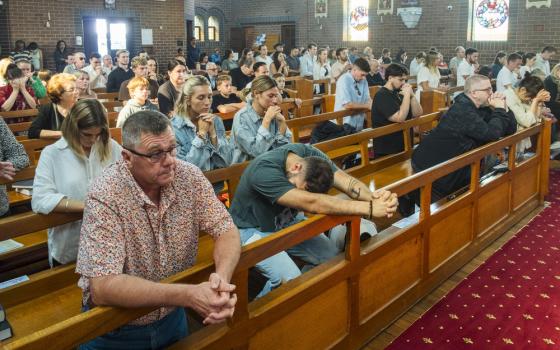It was six o'clock on April 5,1968, a Friday morning. My mother came into my room, shook me awake and said, "John, Martin Luther King has been killed. You have to get up." I was eight years old.
That weekend 40 years ago, the networks broadcast his story and little else. And all of us, my parents and brothers, took in all the reports about his life and work and campaigns to abolish racism, poverty and war. Over and over they played his famous speeches; they discussed his vision of nonviolence.
Sunday afternoon, we piled into the car. And my father drove us from our home in Bethesda, Maryland, into Washington, D.C. -- there to see with our own eyes the rampaging and the fires and police repression. Dad said he wanted me to remember this. And I have.
The death of Martin Luther King, Jr. and then Robert Kennedy's two months later, set my life's path. I read, even then, all I could find about their lives and deaths. I didn't understand everything. But I took it all to heart. I remember I cried a lot.
Later I majored in African-American history at Duke. And there was a day, a vivid moment in Professor William Chafe's class, while studying King's Birmingham campaign, that a light dawned and things became clearer. I began to understand the dynamic of nonviolent resistance to evil -- how love and truth pitted against injustice wears the opponent down, converts and transforms and reconciles him.
I entered the Jesuits in 1982, and there I began a long study of the writings and biographies of Dr. King. During the novitiate's 30-day retreat, the Spiritual Exercises, I wept again over the martyrdom of Dr. King, and wondered how anyone could make a difference if such a great prophet could be cut down so easily at 39.
In 1984, Coretta Scott King appeared at a small Baptist church in Washington, D.C. And I made sure to be there. She spoke simply and beautifully about "agape," universal nonviolent love as our common calling. Her talk over, she settled in a chair in front of the altar and received a few people. I hovered about, the last on line. Finally, my turn arrived and I sheepishly introduced myself. By then most had left, so she hauled another chair next to hers and sat me down. And we spoke for 20 minutes in front of the altar in an empty church.
And how gracious she was. She affirmed my interests in peace and justice, and urged me to keep pursuing nonviolence as a Jesuit -- not an altogether easy arrangement, as I've come to learn. Over the years, especially during my tenure as director of the Fellowship of Reconciliation, she offered words of support. And I got the support of many of Dr. King's friends, especially Rev. James Lawson and Dorothy Cotton -- dear friends who taught me all the more vividly of Dr. King's vision.
His vision impelled me to join, in 1993, a Plowshares disarmament action and while in prison for it, I resolved that, on my release, I would visit the historic sites where Dr. King campaigned. In 1995, I made a private pilgrimage, first to Atlanta and King's grave, then to Montgomery and Selma and Birmingham, then to Mississippi and finally to Memphis, staying with friends along the way.
The Lorraine Motel, in Memphis, lingers most in my mind. It sat then in a neighborhood of poverty and despair. I stood on the balcony and looked across the shabby vista. He himself stood there 40 years ago now, waiting to go to dinner and from there to a mass meeting. He called down to the driver, also a soloist in the choir, and requested his favorite hymn for that night, "Precious Lord, Take my Hand." Precious Lord, take my hand -- Dr. King's very last words.
A gunshot shattered the calm and ripped apart his vocal chords. On the balcony where he died, you can still see a circle of blood in the concrete
We know now his death stemmed from a conspiracy at high levels. A civil trial in 1999 disclosed that 30 people -- FBI agents, policemen, and Mafia assassins -- had been stationed about, well armed and taking aim. Seventy witnesses testified under oath about the government's plans and involvement. The jury found, in just one hour, that responsibility for King's death lay with other parties than James Earl Ray.
And no surprise, given that Dr. King was the leading critic against the government's war in Vietnam. More, that he had plans afoot for a massive campaign, in the style of Mahatma Gandhi, to bring the poor to interfere with the workings of Washington, D.C. -- this until poverty and war were abolished. The government did what governments do -- it executed the prophet. An old story, and new. It's the story of Jesus; it's the story of Romero, and countless others.
Without Dr. King, the Poor People's Campaign went ahead as best it might. And that June 1968, my dad made us get back in the car and took us downtown again to see it for ourselves. Rained poured that weekend, and "Resurrection City" became a sea of mud. The people, even in their tents, were soaked to the bone.
The media surveyed the scene and proclaimed the project a disaster. And to this day many perceive it that way. But I've never considered it a failure. I've just come to presume that resurrection is a messy, muddy affair; that's how it starts.
Which leads me to ponder the resurrection of Martin Luther King, Jr. Resurrection is not a serious topic among North Americans. We tie it up with the advent of spring, with bunny rabbits and eggs and shopping sales. Hardly do we acknowledge a theology, much less a spirituality, of resurrection. Many, especially in Black and Hispanic communities, have a theology of the cross. They understand the social dynamic of suffering as a means for transformation. But a theology of resurrection eludes us.
El Salvador, on the other hand, has a palpable theology, even a praxis, of resurrection. I learned of it in 1985 when working at a refugee camp, the U.S.-sponsored war raging on all around us. The suffering and death there astonished me. It astonished me too that the people engaged in vibrant discussions of resurrection. People reflected on the presence of Oscar Romero in their lives. When the name of a recently martyred person came up, his friends shouted "Presente!" They held close the notion that Romero was alive, had arisen, in their communities -- and with Romero, all the martyrs, including Jesus himself.
Few speak that way here in the North. Here, the government, the media, and even the churches, declared the nonviolent vision dead along with Dr. King. It vanished, say cynics, with his last breath. I disagree. I think Dr. King lives on, and his vision of nonviolence lives on as well. The community activism, the grassroots movements around the nation and the world, and the committed people who espouse nonviolence, have risen in large part from the blood of Dr. King's sacrificial nonviolence. I believe Martin King is alive and well with the risen Jesus, with Coretta, his parents, and all the saints and martyrs.
And because they have risen, we can understand and embrace the same courageous spirit, the same militant nonviolence. We can become people of resurrection, and carry on Dr. King's daring, public, prophetic work. We can begin to understand the dynamics, the spirituality and praxis of resurrection.
The more we can claim the resurrection of our prophets, beginning with Dr. King, the more our lethargy and despair will dissipate, and the more we'll discover new wells of hope and joy. Then our grassroots campaigns for justice and peace will deepen and flourish. We'll imagine an end to racism, poverty, war, nuclear weapons and global warming, and find new faith and strength to give our lives for that vision. We'll practice creative nonviolence as a way of life like never before, knowing that our holy prophet, Martin King, lives in us and our new vision.
With such thoughts on this solemn anniversary, let's pray with Dr. King his favorite hymn, and then get back to the work, the theology, the spirituality, the praxis of resurrection.
Precious Lord, take my hand.
Lead me on, let me stand
I am tired. I am weak. I'm alone
Through the storm, through the night
Lead me on to the light
Take my hand precious Lord, lead me home.
When my way grows drear
Precious Lord linger near
When my light is almost gone
Hear my cry, hear my call
Hold my hand lest I fall
Take my hand precious Lord, lead me home.
When the darkness appears
And the night draws near
And the day is past and gone
At the river I stand
Guide my feet, hold my hand
Take my hand precious Lord, lead me home.
Precious Lord, take my hand
Lead me on, let me stand
I'm tired, I'm weak, I'm alone
Through the storm, through the night
Lead me on to the light
Take my hand precious Lord, lead me home.
(Words and music by Thomas A. Dorsey)
This week, Loyola Press launches a new website about John Dear's forthcoming autobiography, "A Persistent Peace," (www.persistentpeace.com) which includes excerpts and over 30 photos from John's life journey. The book goes on sale on Aug. 1, and later this fall, John will undertake a nationwide book tour as a campaign of peace to discuss this vision of nonviolence. For further information, see: www.johndear.org.




